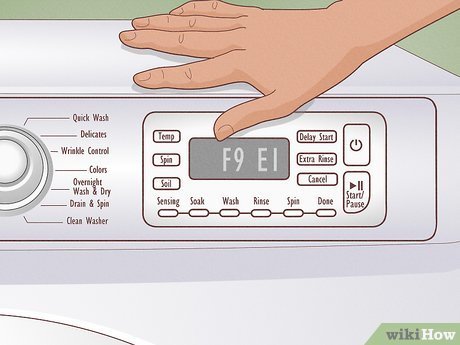
This “SE” code usually signifies a sensor issue, specifically related to the motor speed sensor. But, before you start imagining expensive repairs and technical jargon, let’s break it down into manageable steps. Handling this error is a bit like calming a nervous cat; it just requires a gentle touch and a bit of patience. In this guide, we’ll walk you through resetting your Maytag washing machine, ensuring you can get back to your regular laundry routine with ease.
Understanding Error Code SE on Your Maytag Washer
First things first, let’s deep dive into what this error code actually means. When your washing machine displays an “SE” or “5E” error code, it typically points to an issue with the machine’s motor speed sensor. This sensor monitors the speed of the motor and ensures your wash cycle proceeds smoothly. Without proper functioning, it’s like trying to drive a car without a speedometer.
Why does this happen? Well, it could be due to a few reasons such as a temporary glitch, wiring issues, or even excessive laundry loads causing the machine to misread sensor signals. It’s similar to when your phone suddenly freezes—sometimes it just needs a good reset. Addressing this doesn’t always mean you have to call a technician; often, it’s something you can tackle yourself at home.
Before diving into technical fixes, it’s crucial to pinpoint the cause. Check if there’s any noticeable physical damage to the machine, and ensure that the load inside isn’t overwhelming it. Imagine stuffing a backpack too full; eventually, the zipper won’t close properly. In the same spirit, an overloaded washer can confuse its internal sensors.
Steps to Reset Your Maytag Washing Machine
If you find your washer stuck on this error code, there’s a simple reset process you can follow. Think of it like rebooting your computer when it’s acting up; it can clear temporary glitches and get things running smoothly again. Here’s how you can reset your washer to troubleshoot the “SE” error code.
Begin by power cycling your washing machine. Unplug the washer from its power source for about 10 minutes. This short break allows the machine’s internal components to reset, much like when you need a moment to gather your thoughts. If unplugging is difficult due to the washer’s location, turning off the switch at the circuit breaker is an alternative.
Once you’ve given it some time, plug the machine back in or flip the breaker switch. Now, turn on the washing machine and select a short wash cycle without any laundry in it. It’s a bit like taking the car for a test drive to ensure everything is back in working order. If the cycle completes without displaying the error code, congratulations, you’ve successfully reset your washing machine!
Additional Steps if the Error Persists
Sometimes, despite your best efforts, the error code might persist. Don’t panic—it just means your washer needs a bit more attention. You might need to check the connections and wiring inside. Just like a loose cable can disrupt your TV signal, a loose connection can mislead your washer’s sensors.
Before you attempt anything, ensure the power is disconnected to avoid any electrical hazards. Carefully remove the back panel of the washing machine and check for any obvious disconnections or damaged wires. If you’re unsure, it might be worth calling a professional at this stage to avoid exacerbating the problem.
Another potential culprit could be the control board, acting like your washer’s brain. If it’s faulty, it might need replacing. Again, if this sounds daunting, seeking professional help is a wise choice. In any case, diagnosing and fixing these issues can save you from repeated cycles of frustration and ensure your washing machine functions optimally.
Preventative Tips for Future Maintenance
To keep your washing machine running smoothly in the future, regular maintenance is key. Think of it like going to the gym; consistent, light exercise keeps everything in top shape. Start by not overloading your washer, remembering that it needs room to move and breathe.
Regularly cleaning your washing machine also helps prevent the buildup of soap and lint, which can interfere with the machine’s sensors. It doesn’t need to be a chore—just running an empty hot cycle with a bit of vinegar or cleaning solution every couple of months can do wonders.
Lastly, make a habit of checking hoses and connections for any signs of wear and tear. If you notice anything unusual, addressing it promptly can prevent small issues from snowballing into bigger, costlier problems. With these simple habits, you can keep your washer running efficiently and say goodbye to unwanted error codes.
In summary, while encountering an “SE” error code might seem daunting at first, with these steps and ongoing maintenance, you can handle it with confidence. After all, playing detective and solving these little mysteries can be quite satisfying, leaving you with a well-functioning washing machine and the pride of having fixed it yourself.